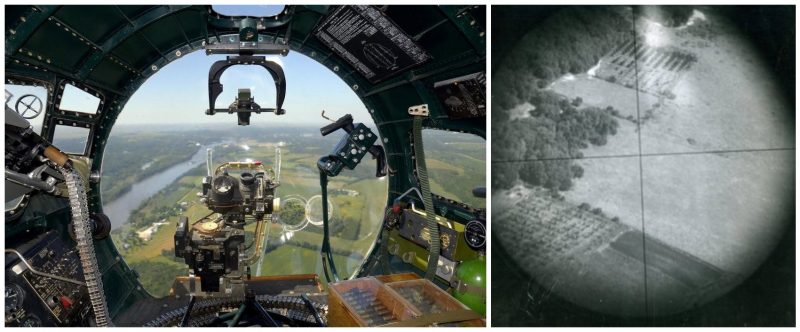Editor’s notice: this has been debunked as one of the urban myths of WWII
Before the time of computers and lasers, or even radar, aerial bombing was a rather haphazard affair. World War bombers relied upon training and experience.
This all changed with the invention of the Norden Bombsight. Carl L Norden, a Dutch engineer who emigrated to the United States, and his company developed this device. It was truly revolutionary for the time, accurate to 75 feet.
An analog computer, linked to the plane’s autopilot, plotted the bomb’s trajectory and took account of environmental factors such as wind speed and directions. Norden is probably not given enough credit for the role he played in the war effort, but one woman is given even less credit. Without her, the Bombsight might never have succeeded.
The Norden Bombsight required a set of crosshairs with which to pinpoint a target. This, surprisingly, was a difficult task. A World War II airplane had to withstand some pretty rigorous punishment and so the material had to be strong. Black spider webbing was tried, but it could not withstand the variations in temperature experienced in flight.
Eventually, it was discovered that the material best up to the job was, in fact, human hair. It could withstand the freezing temperatures at 20000 feet. But it had to be blond and long. Moreover, it could not have been ever treated with chemicals or even heated. This compromised the strength and integrity of the hair.
Where, in 1944, could a woman who never treated her hair be found? One woman met the strict criteria. She was Mary Babnik Brown. Her hair was blond, 34 inches long, and she only washed it with soap. Brown’s hair reached down to her knees and had never been cut. She wore it wrapped around her crown.
She answered an ad in a Pueblo (Colorado) newspaper which, for the reasons of security, never mentioned the Bombsight. It only invited women to donate hair for the war effort. Brown was told samples of her hair would be used for meteorological experiments. The Washington Institute of Technology studied her samples and concluded that her hair would be suitable for crosshairs.
The government asked if it could cut her hair and she agreed. She refused payment in war saving stamps, saying that it was her patriotic duty to aid the war effort. She did, however, feel the loss dreadfully, crying for two months after. Mary Brown’s hair went on to further glory, used in military aircraft for measuring humidity. Extraordinarily, Brown only found out what a hero her hair had been in 1987 when President Ronald Reagan sent her a congratulatory letter on the occasion of her 80th birthday.
The Nordic Bombsight was used on the B-24 Liberator, B-29 Super Fortress, and B-17 Fortress, and was a great success. It was surrounded by charges so that it could be destroyed should the enemy attempt to seize it.
Shortly after 1944, Mary Brown married Carl Brown. In 1947 she became the first woman to hold the office of Vice President of the State Federation of Labor. She was also active in the Pueblo Democratic Party, as well as Vice-President of the Slovenian Lodge, Slovenian National Benefit Society. She lived in Spring Street, Pueblo. She died on April 14, 1991, aged 83.
Her contribution to the war effort and her country was recognized rather late in her life. On November 17, 1990, she was honored with an award by the Colorado Aviation Society at the US Air Force Academy and inducted into the Society’s all of Fame. Pueblo declared November 22, 1991 ‘Mary Babnik Brown Day’.
The ceremonial banquet at the Pueblo Country Club was recorded and aired by NBC-TV.
